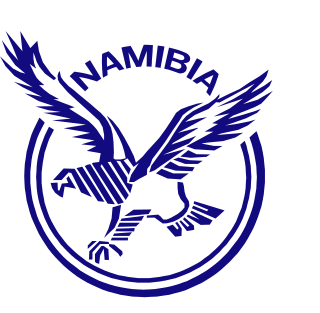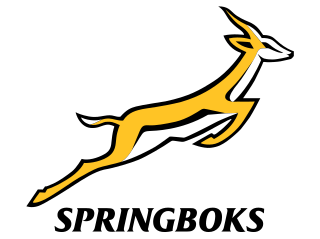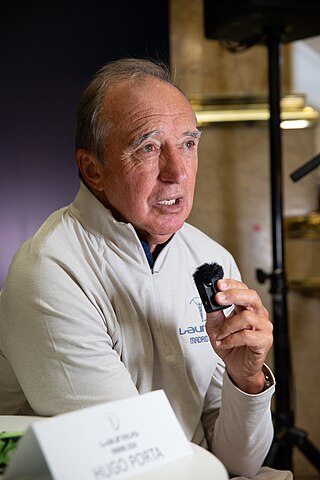
The British & Irish Lions is a rugby union team selected from players eligible for the national teams of England, Ireland, Scotland, and Wales. The Lions are a test side and most often select players who have already played for their national team, although they can pick uncapped players who are eligible for any of the four unions. The team tours every four years, with these rotating between Australia, New Zealand and South Africa in order. The most recent test series, the 2021 series against South Africa, was won 2–1 by South Africa.

The New Zealand national rugby union team, commonly known as the All Blacks, represents New Zealand in men's international rugby union, which is considered the country's national sport. Famed for their international success, the All Blacks have often been regarded as one of the most successful sports teams in history.

The Rugby Championship, formerly known as the Tri Nations Series (1996–2011), is an international rugby union competition contested annually by Argentina, Australia, New Zealand, and South Africa. These are traditionally the four highest ranked national teams in the Southern Hemisphere; the Six Nations is a similar tournament in the Northern Hemisphere.

The Namibia national rugby union team represents Namibia in men's international rugby union competitions nicknamed the Welwitschias, are a tier-two nation in the World Rugby tier system, and have participated in seven Rugby World Cup competitions since their first appearance in 1999. They are governed by the Namibia Rugby Union.

The South Africa national rugby union team, commonly known as the Springboks, is the country's national team governed by the South African Rugby Union. The Springboks play in green and gold jerseys with white shorts, and their emblem is the Springbok, a native antelope and the national animal of South Africa. The team has represented South African Rugby Union in international rugby union since 30 July 1891, when they played their first test match against a British Isles touring team. Currently, the Springboks are the top-ranked rugby team in the world and reigning World Champions, having won the World Cup a record four times. South Africa have won half of the Rugby World Cups they have participated in and are also the second nation to win the World Cup consecutively.

The Australia men's national rugby union team, nicknamed the Wallabies, is the representative men's national team in the sport of rugby union for the nation of Australia. The team first played at Sydney in 1899, winning their first test match against the touring British Isles team.

The Japan national rugby union team, also known as the Cherry Blossoms, the Brave Blossoms, or simply Sakura, represents Japan in men's international rugby union. Japan is traditionally the strongest rugby union power in Asia and has enjoyed and endured mixed results against non-Asian teams over the years. Rugby union in Japan is administered by the Japan Rugby Football Union (JRFU), which was founded in 1926. They compete annually in the Pacific Nations Cup (PNC) and previously in the Asia Rugby Championship (ARC). They have also participated in every Rugby World Cup (RWC) since the tournament began in 1987, and hosted the event in 2019.

The Wales national rugby union team represents the Welsh Rugby Union in men's international rugby union. Its governing body, the Welsh Rugby Union (WRU), was established in 1881, the same year that Wales played their first international against England. The team plays its home matches at the Millennium Stadium in Cardiff, which replaced Cardiff Arms Park as the national stadium of Wales in 1999.

The Argentina national rugby union team represents Argentina in men's international competitions, The Argentine Rugby Union. Officially nicknamed Los Pumas, they play in sky blue and white jerseys. They are ranked 7th in the world by World Rugby, making them by some distance the highest-ranked nation in the Americas.

Hugo Porta is an Argentine retired rugby union player. Considered one of the best fly-halves the sport has seen, he is an inductee of both the International Rugby Hall of Fame and IRB Hall of Fame. During the 1970s and 1980s, he played 58 times for Argentina, captaining them on 34 occasions, including leading them during the first World Cup in 1987.
The South Africa national rugby league team to date have competed at two Rugby League World Cups in 1995 and 2000.

The Craven Week is an annual rugby union tournament organised for schoolboys in the Republic of South Africa. The tournament started in July 1964, and is named after the legendary Springbok rugby union player and coach Dr Danie Craven.

Rugby Africa is the administrative body for rugby union within the continent of Africa under the authority of World Rugby, which is the world governing body of rugby union. As of 2018, Rugby Africa has 37 member nations and runs several rugby tournaments for national teams, including the Africa Cup which is the main 15-a-side competition for African national teams.

The contest between The Wallabies and The Springboks is one of the major rivalries in rugby union. Since 2000s, the two teams have competed for the Mandela Challenge Plate.
The South Africa national under-20 rugby union team are South Africa's junior team at national level. They have been competing in the World Rugby Under 20 Championship since its inception in 2008. This Under-20 tournament replaced the previously-held Under-19 and Under-21 Rugby World Championships. Prior to 2018, it had been the country's "next senior" (second-level) 15-man national side, but World Rugby no longer allows member unions to designate age-grade sides as "next senior" teams.
The 1980 Sudamérica XV rugby union tour of South Africa was a series of seven matches played by the Sudamérica XV rugby union team in South Africa in April and May 1980. The South American team won five of the matches but lost both that were against the South Africa national team.
The South African national under-18 rugby union team – often referred to as the South African Schools rugby union team – is the under-18 side of the South Africa national rugby union team.

Peter George Johnson was an Australian international rugby union player. He enjoyed a long state and international career throughout the 1960s and made 92 national appearances for his country. He captained the Australian side in five Test matches.

Stedman-Ghee Rivett Gans is a South African rugby sevens player for the South Africa national team and a rugby union player for the Bulls in the United Rugby Championship and the Blue Bulls in the Currie Cup. He usually plays as a centre or a winger.
Johannes Gerhardus "John" Williams is a former South African rugby union player and coach.














